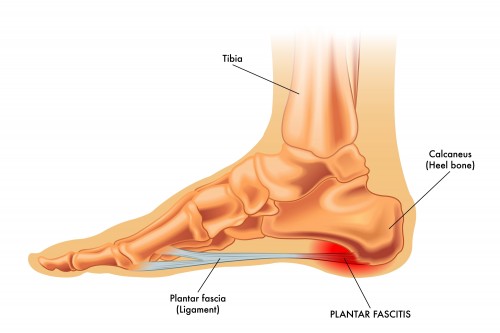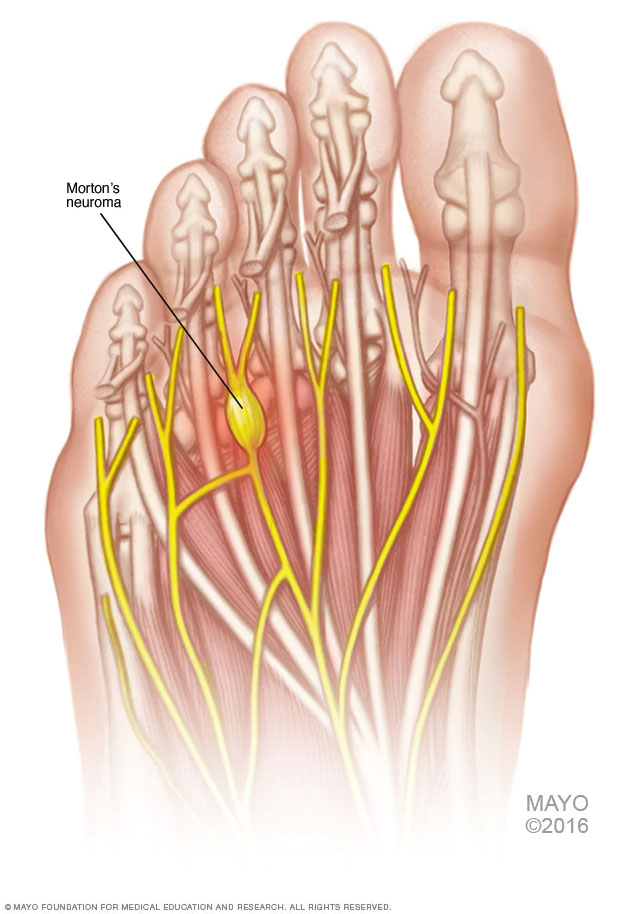Sports Medicine
Dr. Kearl has a unique passion for aiding athletes in their sporting pursuits. Whether it be team or individual sports, Dr. Kearl wants to help you maximize your full potential. Improper biomechanics can cause abnormal pressure and strain on the feet, ankles, knees and hips, as well as your back, which can lead to injury. It can also cause inefficiency of the muscles firing, causing premature tiredness to the lower extremity.
All movement is good for health and body circulation, but repetitive stress will increase your risk of injury. We want to catch strains or discomfort before they become injuries. “Running through” pain will lead to an eventual injury. This will stop your training or your ability to compete cold. If you are having recurring soreness or pain in your feet, ankles, knees, hips, posterior, or back, come in for a biomechanical and gait analysis to see if the position of your feet could be a cause.
Dr. Kearl does not only have knowledge in sports medicine, he has experience in many disciplines. Dr. Kearl enjoys competing in many athletics, such as road and Ultra trail running, triathlons, hiking and backpacking, obstacle courses races (“Tough Mudders” and Spartan races), and adventure races (MOMAR). He enjoys taking the time to teach and help you understand your injury; causes, treatment, and prevention.
COMMON INJURIES
With any acute injury, using RICE (rest, ice, compression, elevation) is necessary. You must give your injury time to heal. Stopping activities and seeing a podiatrist is always needed.
Dr. Kearl prescribes and creates custom fit orthotics to help with many types of needs. Our inserts can fit into a variety of shoes including, but not limited to, work boots, running shoes, soccer cleats, dress shoes, regular daily wear shoes and children’s shoes. Our orthotics have improved the quality of life for many of our patients.
Sports medicine is an important part of Valley Podiatry. Dr. Kearl sees many high performance athletes, and creates orthotics to support the demands of high impact running.
When evaluating for foot pain, Dr. Kearl performs a biomechanical evaluation, and then prescribes corrections. Impressions of the foot in the correct position are taken by plaster of paris molds or 3D imaging, and then sent to our laboratory for fabrication, according to specific recommendations from Dr. Kearl. Many insurance companies require these steps to be fulfilled in order to qualify for coverage.
LEG CRAMPING
Cramping of muscles, especially in the evening or overnight while sleeping, can be caused by over worked or strained muscles during the day. If your arches are flattening, this can cause the over working of the muscles. Drinking enough water, supplementing your diet, and being evaluated by a podiatrist is important. If the position of your feet when weightbearing are a cause of your problem, you need to visit us to get the proper evaluation and suggested treatment.
HEEL & ARCH PAIN (Plantar fasciitis)
Plantar fasciitis (Heel Pain) is the most common foot injury Dr. Kearl sees in his office. It is seen more often in patients with prolonged weight bearing, obesity, weight gain, jobs that require a lot of walking on hard surfaces, shoes with little or no arch support, and inactivity.

Plantar fasciitis is an inflammation of the band of tissue (that extends from the heel to the toes). This band helps maintain an arch to the foot.
Through the causes listed above, the fascia first becomes irritated and inflamed, resulting in heel pain. The most common cause is flat feet, or overpronation (feet rolling in) which strains the plantar fascia. It usually begins as a tenderness or mild discomfort on the sole of the foot, or in the heel or arch area. Gradually, as it progresses, it becomes more severe, and localizes usually to a spot under the heel. It is often worse with the first few steps in the morning or after sitting for long periods of time. After a few minutes of walking, the pain decreases because walking stretches the fascia. The pain can subside with rest, only to flare up again with activity.
To get this injury to heal, the use of custom orthotics is often needed. Orthotics will stop the underlying cause which is the over-pronation of the foot. Other modalities, such as injections, night splint, physiotherapy using ultrasound and stretches, plus shockwave can be used in conjunction with the orthotics.
If you are suffering with heel pain call and make an appointment today.
NEUROMA
A neuroma is a swollen inflamed nerve usually in the ball of the foot, most commonly between the 3rd and 4th toes. It presents as tingling, burning, numbness, and pain in the ball of the foot and into the toes. Some people describe it as a feeling of a sock bunched up, a marble or a lump in the ball of their foot, or something in their shoe. It usually begins with a gradual burning or soreness, but can become more intense and persistent, as the neuroma gets more inflamed and larger and damage becomes permanent. A neuroma often hurts more when you’re wearing shoes and feels better when you take them off and massage your feet.

Causes can be:
- Wearing narrow or tapering toe boxed shoes
- Activities or sports that require a repetitive irritation to the ball of the foot, such as trail running, tennis, pickle ball. The symptoms may go away temporarily by massaging the foot or by avoiding activities that brought on this pain.
- People with certain foot deformities such as bunions, hammertoes or flatfeet, are also at high risk for developing a neuroma.
- Overpronating or flat feet causes excessive motion in the metatarsal bones, which pinch and aggravate the nerve.
Custom orthotics are often used to stop the underlying cause, overpronation of the feet. They often incorporate a specialized metatarsal pad within them that can provide more relief. Other adjunctive therapies can be used, such as steroid injections, alcohol injections, and surgery.
It’s best to consult Dr. Kearl in the early stages of development as early diagnosis greatly lessens the need for invasive treatments and a potential surgery.
POSTERIOR TIBIAL TENDONITIS
The posterior tibial tendon runs behind the inside of the ankle and attaches near the middle of the foot. It presents itself as pain or soreness in the inside (medial) part of the foot and ankle.
Posterior tibial tendonitis is an inflammation to or along this tendon due to undue strain placed upon it, usually due to excessive rolling-in (pronation) of the affected foot. Normally this tendon aids in the holding-up or supporting of the arch of the foot. If this tendon is not functioning properly, the foot will roll-in excessively (pronate), resulting in ‘flat feet’, and an excessive strain on this tendon. Initially the pain and swelling may be intermittent, but eventually it can progress and become consistent, and in some cases disabling.
To treat this condition, we need to minimize the swelling and pain, and then treat the underlying cause; the hyperpronation or flattening of the foot.
In severe cases, a walking cast boot is worn to allow healing of the tendon, then the use of custom orthotics to stop the flattening of the foot and over straining of the tendon. Other adjunctive therapies such as physiotherapy can also be used.
METATARSALGIA & STRESS FRACTURES
This presents itself as pain in the ball of the foot, being worse after weight-bearing activities. The pain can feel like it is in the entire ball of the foot, but is usually localized to one area or bone. There may also be a callus under the metatarsal bone. It may feel like a bruise or walking on a pebble. It is worsened with repeated impact on the ball of the foot or when you are bare foot.
Causes:
- One metatarsal bone sitting lower than the others.
- Over-pronation (flattening arch) causing too much pressure on the ball of the foot.
- Repeated impact on the ball of the foot
- Overtraining or over use
- Long hours on hard surfaces in improper shoes
Reducing the pressure on the bones will help calm the inflammation. This can be done by wearing well cushioned shoes, especially around the house or when on hard surfaces. The use of custom orthotics with a metatarsal pad will stop the flattening of the arches, and thus the abnormal pressure on the ball of the foot.
Do not continue to run through the pain. If left untreated, the metatarsal bone can weaken, and tiny fractures can form a stress fracture. The healing then becomes more complicated and timelier.
If you are feeling soreness or discomfort in the ball of your foot, don’t neglect your body, call and make an appointment today.
ACHILLES TENDONITIS
The Achilles tendon runs down the back of the leg and connects the calf muscle to the back of the heel. This tendon allows you to rise up on your toes and push off while walking or running. It can become inflamed by over use or inflexibility.

The strain can occur in or just above the back of the heel or further up closer to the calf muscle. Too much stress on the tendon can cause micro injury of the tendon fibers. With continued stress, the fibers are unable to be repaired, and become inflamed (sore and stiff).
If left untreated, the risk of continued damage and even a rupture can happen. When the inflammation becomes chronic, a bony enlargement can form in the back of the heel, called a Haglund’s bump. This can be further irritated by the back of the shoe rubbing on the bump.
Causes:
- Athletes and “weekend warriors.”
- Overuse or sudden increase in use (running uphill).
- Increasing your level of activity too quickly.
- A tight calf muscle disrupts normal foot biomechanics causing too much strain on the tendon.
- Hyperpronation (flattening arches) over-strain the tendon.
Treatment:
- Stop aggravating activities.
- Custom Orthotics.
- In severe cases, immobilization in a walking cast boot.
- Anti-inflammatories, ice, massage.
- Heel lifts, stiff supportive shoe wear.
You do not want to run through Achilles tendonitis. Even the mildest strains can turn into a partial or complete tear which could lead to permanent damage. If you are having soreness or pain in the back of your heel, call and make an appointment today.
SHIN SPLINTS
Shin splints is a term to describe pain and swelling in the front of the lower leg. The pain usually appears after activities and is aggravated by repetitive action such as running or walking. Contributing causes are flat feet, calf tightness, improper training techniques and worn out or improper shoes or sneakers, as well as running or walking on uneven surfaces.
The inflammation in the shin results from the repeated pull of a muscle in the leg from the shin bone (tibia). Left untreated, shin splints can cause micro fracturing to the tibia.
BLACKENED & THICKENED TOENAILS
You may have had a nail turn black after training or an event, especially longer distances or up and down hills. This is from excessive pressure on the nail, usually from shoes that are too small. The most common nail is the 2nd digit, or the one next to the big toe. When the 2nd digit is longer than the big toe, it takes the most pressure in your shoe, and many times this nail will be damaged, turn black, and the nail falls off. We call this the “Runner’s toe.”

